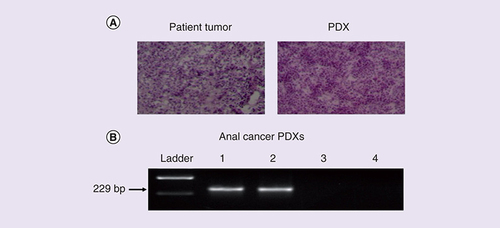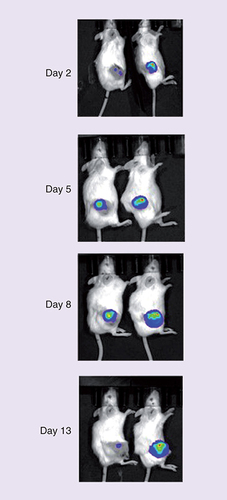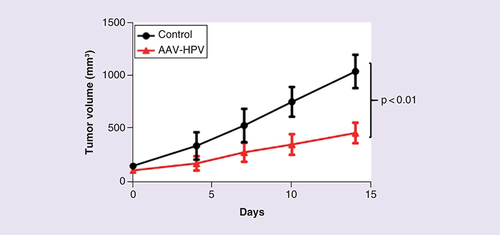Figures & data
Indicator constructs containing segments of the HPV16 E6 or E7 ORF fused in frame with the FLuc indicator gene [Citation10] were transfected into 293T cells along with vectors encoding Sau Cas9 and an sgRNA specific for the HPV16 E6 or E7 gene, or a control sgRNA. An internal control vector encoding RLuc was also co-transfected. At 48 h post-transfection, the cells were harvested and FLuc and RLuc levels determined. FLuc levels were normalized to the RLuc internal control and are given relative to the control sgRNA, which was set at 1. Average of three experiments with SD indicated.
FLuc: Firefly luciferase; ORF: Open reading frame; RLuc: Renilla luciferase; SD: Standard deviation; sgRNA: Single guide RNA.
![Figure 1. Inhibition of HPV16 E6 and E7 function using Sau Cas9.Indicator constructs containing segments of the HPV16 E6 or E7 ORF fused in frame with the FLuc indicator gene [Citation10] were transfected into 293T cells along with vectors encoding Sau Cas9 and an sgRNA specific for the HPV16 E6 or E7 gene, or a control sgRNA. An internal control vector encoding RLuc was also co-transfected. At 48 h post-transfection, the cells were harvested and FLuc and RLuc levels determined. FLuc levels were normalized to the RLuc internal control and are given relative to the control sgRNA, which was set at 1. Average of three experiments with SD indicated.FLuc: Firefly luciferase; ORF: Open reading frame; RLuc: Renilla luciferase; SD: Standard deviation; sgRNA: Single guide RNA.](/cms/asset/3bce15f4-e250-4d83-9058-6c19808fab76/ifvl_a_12335664_f0001.jpg)
This AAV8-based vector, which expresses two sgRNAs plus the Sau Cas9 protein in transduced cells, falls well below the approximately 4.8 kb packaging size limit for AAV vectors. sgRNAs were expressed using RNA polymerase III (pol III)-dependent promoters while Sau Cas9 was expressed using a minimal CMV-derived promoter.
AAV: Adeno-associated virus; CMV: Cytomegalovirus; ITR: Inverted terminal repeat; sgRNA: Single guide RNA.

(A) H&E-stained sections of matched patient tumor and PDX of an anal cancer revealed similar histological features. (B) PCR was used to detect the HPV16 genome in one out of three anal cancer PDXs.
H&E: Hemotoxylin and eosin; Lane 1: HPV16+ SiHA cervical carcinoma cells (positive control); Lanes 2–4: Anal cancer PDXs; PDX: Patient-derived xenograft.

An AAV8 capsid-based AAV vector encoding FLuc was packaged and then diluted to 1010 AAV particles per μl. A total of 10 μl were then injected IT into an anal cancer PDX in mice. FLuc expression was then monitored using an in vivo imaging system.
AAV: Adeno-associated virus; FLuc: Firefly luciferase; IT: Intratumorally; PDX: Patient-derived xenograft.

HPV-AAV, or a control AAV vector encoding two nontargeting sgRNAs, was injected IT into an anal cancer PDX in mice. Tumor volume was measured twice per week. A statistically significant (p < 0.01, as determined by one-way analysis of variance) inhibition of tumor growth was observed in the anal cancer PDXs treated with HPV-AAV (n = 8) when compared with the control AAV (n = 7).
AAV: Adeno-associated virus; HPV: Human papillomavirus; IT: Intratumorally; PDX: Patient-derived xenograft; sgRNA: Single guide RNA.

